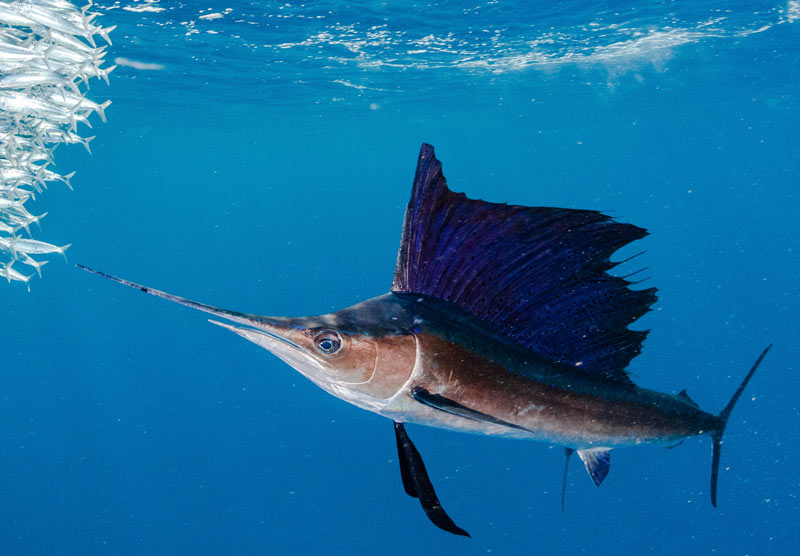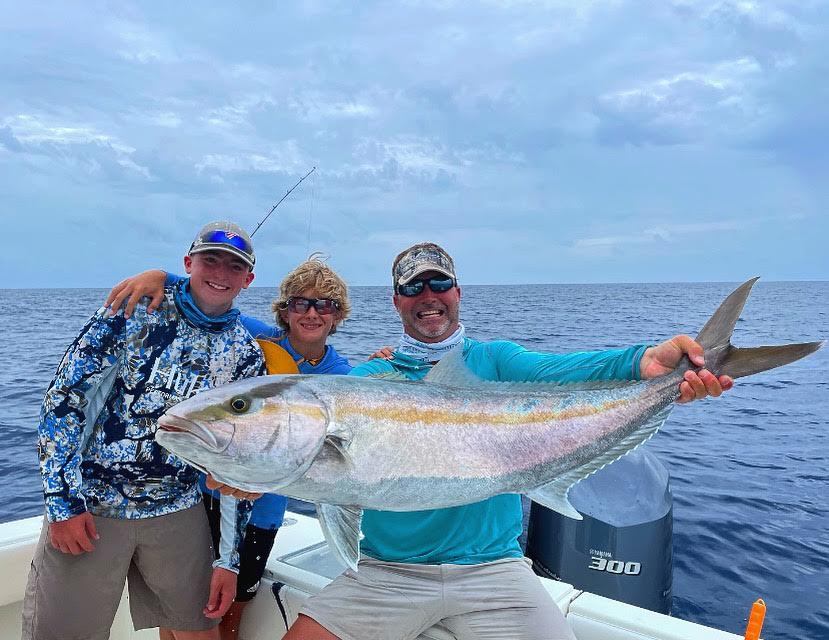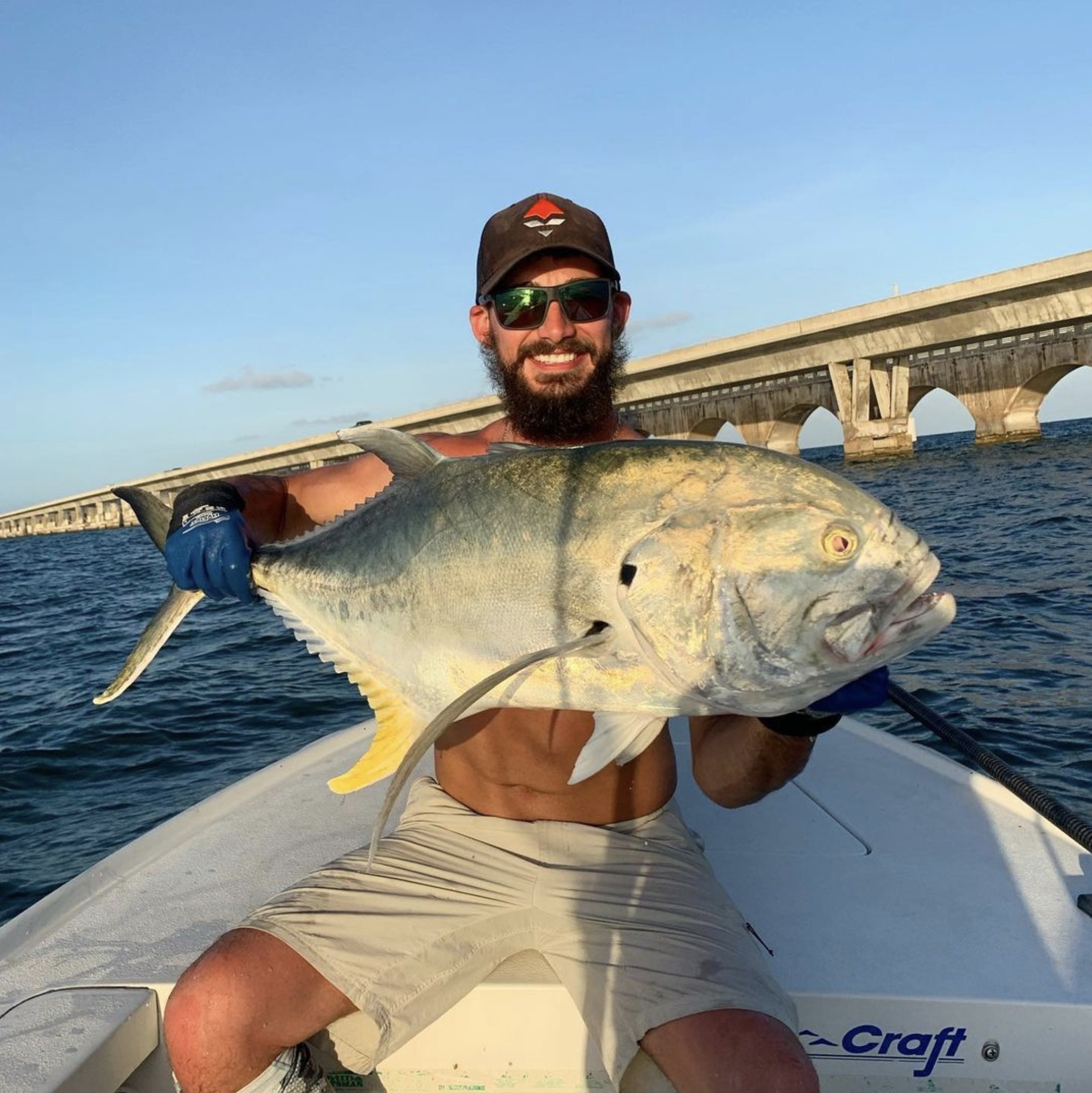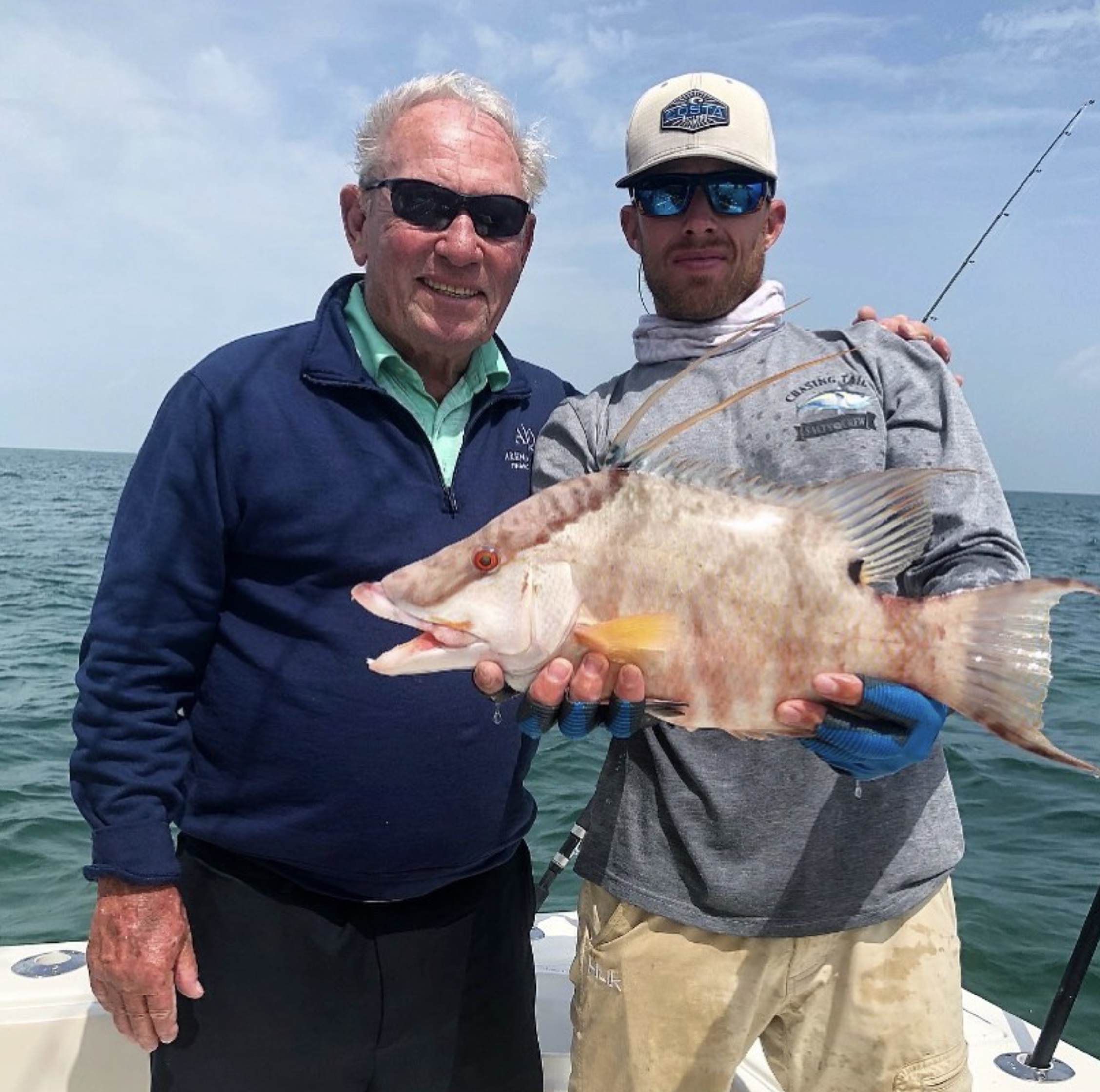What can you catch in the keys with Five 7's?

Mahi
The dolphin or dorado is one of the most sought-after sportfish for its acrobatic fight, beauty, and excellent eating. The dolphin is a prolific fish of blue, yellow, and green coloration with patterns of blue and purple dots that can flash when the fish is excited. The male fish has a tall, blunt forehead compared to the more rounded head of the female. They are fast growers and voracious eaters. They are thought to only live 4 to 5 years old and can reach a weight of over 80-pounds. Dolphin are open ocean fish that occur in most temperate and tropical waters of the world. Due to the dolphin’s voracious appetite, fishing methods vary with location and conditions. Trolling with baits and lures is highly effective when fishing current edges and weedlines. Dolphin are often attracted to the bait that collects under both natural and man-made floating objects and can be a day maker for lucky anglers.

Atlantic Sailfish
The Atlantic sailfish is known for its speed and long runs when hooked up. They are powerful fish and commonly weigh around 30 to 60-pounds. This sailfish species has a dark metallic blue color with lighter shading near its stomach. Long horizontal bars run the length of its body all the way to its strongly forked tail. When fishing for sailfish, techniques such as trolling rigged baits, or live bait work well.

Blackfin Tuna
Blackfin are a wide-bodied tuna with a black back and amber stripe above the lateral line. Their finlets are dusky colored with the slightest bit of yellow on them. Blackfin tuna can reach weights to around 40-pounds, making them one of the smaller tuna species. They are found in both coastal waters and far offshore. They are often found schooling with other species of tuna, such as yellowfin and skipjack. They are caught trolling baits and lures, but live bait, jigs, and poppers will also take these schooling fish.

Goliath Grouper
Goliath grouper are large brownish yellow, gray, or olive with small dark spots on the head, body, and fins. Strikingly patterned juveniles with a series of dark, irregular vertical bands and blotches inhabit mangroves and brackish estuaries, especially near oyster reefs. Occurring in shallow, inshore waters to depths of 150-feet, goliath grouper prefer areas of rock, coral, and mud bottoms. The Goliath grouper is known to reach enormous weights, up to 800-pounds. For fishermen, this fish is legendary and will give anglers a run for their money. Heavy tackle is a must when targeting these fish. Because the goliath grouper is protected, it is illegal to have one in your possession.

Greater Amberjack
The greater amberjack is known for its size and power, giving fishermen a very tough fight. Greater amberjack can grow to sizes well over 100-pounds. Adult amberjack live in offshore waters around man-made and natural structures. Live bait and jigs are the most common methods used to target these aggressive and superhard-fighting fish. They require stout tackle and a strong back.

Great Barracuda
The barracuda is a distinctive fish with a greyish/green back and silver sides with black spots and a white belly. A long slender fish, the barracuda’s teeth are its most prominent feature. They use their mouth full of large teeth to slash a fish to pieces upon impact. They can bite a much larger fish in half, eating them in large chunks. Offshore structures and inshore flats are both home to the barracuda. They are not shy fish and sometimes act curious around swimmers and boats. They can hang motionless, until they’re ready to strike prey, springing forward with one of the fastest reaction times in nature. Live bait, trolling and flashy lures will take barracuda. Wire leader is essential, and they love a lure that is retrieved very quickly. They will often jump when hooked and put up a great fight on the appropriate tackle.

Gray Snapper
Gray snapper are also commonly known as mangrove snapper. They have a gray to dark brown body with a reddish-orange tinge that becomes much more prominent upon death. They may have a dark horizontal band across the eye, but this comes and goes. Two prominent canine teeth are in the front of the upper jaw; they will thrust these out and “bite” you if you get your fingers too close. Juvenile gray snapper live in mangrove roots, grass beds, and around any structures found in inshore waters and usually weigh around 3-pounds or less. Mature gray snapper grow up to 16-pounds and move to offshore structures as adults. Gray snapper can be one of the trickiest fish to catch. They can be very visually weary of terminal tackle. Delicious to eat.

King Mackerel
The king mackerel or kingfish is a long slender fish with silver sides, greenish back, and sharp but small teeth. Our average size king is around 20-pounds. They are a very popular sport fish and are also an important commercial fish.They are schooling fish and are known for their voracious strikes on live bait, though they will also strike lures. Light wire leaders, light drag, and small hooks are used to present many types of live baitfish.

Jack Crevalle
The jack crevalle is a broad-bodied fish with a brown to yellowish back and a bright yellow forked tail. They have a bright silver belly and a black opercular spot. They normally swim in large schools and are voracious predators. Young jacks inhabit coastal inshore waters while adults move along beaches and nearshore structures. They are fun to catch and very strong fighters. They aggressively attack topwater plugs as well as most lures and live bait. They are often found crashing schools of baitfish or running them up against objects like sea walls and boats. Fishermen consider the jack crevalle a game fish, they are strong aggressive predators that can reach weights up to 60-pounds.

Mutton Snapper
Muttons are a large growing, deep-bodied snapper with silverish sides and olive green on the back. Their lower fins have a reddish tint, and there is a distinct black dot below the dorsal fin. They have a bright blue line on the cheek below the eye. This snapper can grow up to 30-pounds. The mutton is both an inshore and offshore species and is often found on offshore reefs and structures. They like to roam grass beds, mangroves, and reefs. They are found in the tropical Atlantic and the Gulf of Mexico. Normally they are caught on live or dead bait but will take jigs. They are a prized catch for most bottom fishermen, both for their beauty and great eating.

Hogfish
The hogfish is large with a laterally compressed body that is high and round. This is in contrast to other wrasses, which tend to be smaller and cigar-shaped. The coloration of the hogfish is variable, dependent upon age, sex, and habitat. It is generally from pearl white to mottled in brownish-red with a black spot at the rear base of the soft dorsal fin. Males tend to be more intensely colored than females. Young individuals and females are primarily pale gray, brown, or reddish-brown with a paler underside. The hogfish can weigh up to 25-pounds. This fish is commonly found over open bottoms and coral reefs at depths ranging from 10 to 100-feet. They are highly prized for their incredibly mild, flaky meat. More often hogfish are spearfished, but in some places we catch them on rod and reel.
